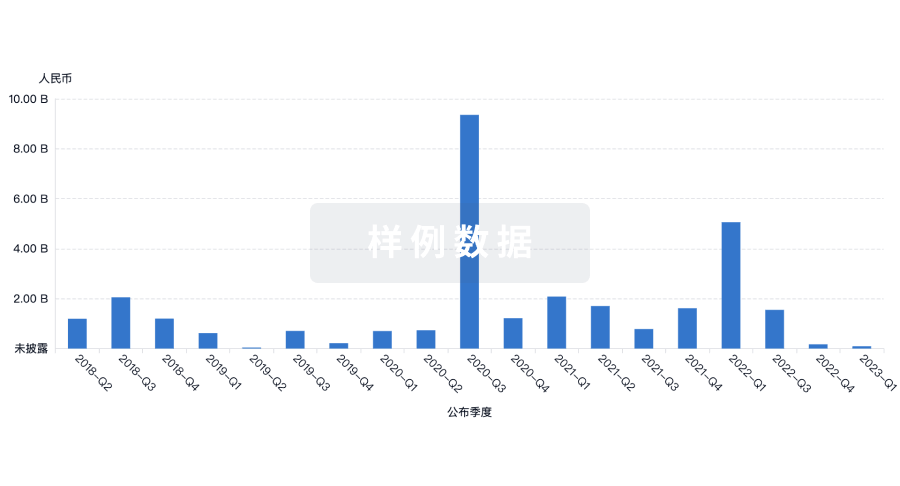预约演示
更新于:2025-10-30

Florida Atlantic University
更新于:2025-10-30
概览
标签
血液及淋巴系统疾病
肿瘤
免疫系统疾病
小分子化药
疾病领域得分
一眼洞穿机构专注的疾病领域
暂无数据
技术平台
公司药物应用最多的技术
暂无数据
靶点
公司最常开发的靶点
暂无数据
| 排名前五的药物类型 | 数量 |
|---|---|
| 小分子化药 | 1 |
| 排名前五的靶点 | 数量 |
|---|---|
| MMP13(基质金属蛋白酶-13) | 1 |
关联
1
项与 Florida Atlantic University 相关的药物靶点 |
作用机制 MMP13抑制剂 |
在研适应症 |
非在研适应症- |
最高研发阶段药物发现 |
首次获批国家/地区- |
首次获批日期- |
41
项与 Florida Atlantic University 相关的临床试验NCT06645548
Machine Learning and 3D Image-Based Modeling for Real-Time Body Weight and Body Composition Estimation During Emergency Medical Care. Study 3 - Measure the Accuracy of Weight Estimations by The 3D Camera System in Acutely Ill or Injured Emergency Department Patients and Compare This Accuracy Against That of Standard Care.
The goal of this randomized controlled clinical trial is to compare standard methods of weight estimation and drug dose calculations against weight estimates and dose calculations using a 3D camera weight estimation system in critically ill or injured cohorts of patients presenting to the Emergency Department. The main question[s] it aims to answer are:
Are weight estimates from a 3D camera system more accurate than standard methods of weight estimation? Do patients who receive weight estimates with a 3D camera system have fewer drug dosing errors than patients receiving standard care?
Participants will either receive a weight estimate using a 3D camera system, or standard methods of care.
Researchers will compare the 3D camera group to those with standard care to see if the weight estimates are more accurate, to see if drug dosing is more accurate, and to compare the incidence of adverse events related to medications in each group.
Are weight estimates from a 3D camera system more accurate than standard methods of weight estimation? Do patients who receive weight estimates with a 3D camera system have fewer drug dosing errors than patients receiving standard care?
Participants will either receive a weight estimate using a 3D camera system, or standard methods of care.
Researchers will compare the 3D camera group to those with standard care to see if the weight estimates are more accurate, to see if drug dosing is more accurate, and to compare the incidence of adverse events related to medications in each group.
开始日期2029-07-01 |
申办/合作机构 |
NCT06646133
Machine Learning and 3D Image-Based Modeling for Real-Time Body Weight and Body Composition Estimation During Emergency Medical Care: Study 2 - Measure the Accuracy and Speed of Weight Estimations Using a 3D Camera System During Simulated Medical Emergencies
The goal of this prospective crossover simulation study is to evaluate the accuracy and usability of a 3D camera weight estimation system during simulated emergency care in adult simulated patients, when used by emergency physicians. The main questions the study aims to answer are:
* to evaluate the accuracy of 3D camera weight estimation during simulated emergency care, when compared with standard methods
* to evaluate the usability of 3D camera weight estimation during emergency care, when compared with standard methods
* to evaluate the inter-user reliability of 3D camera weight estimates Volunteers for simulated patients will be required to have anthropometric measurements, a DXA scan, and 3D camera weight estimates.
Physician volunteers will need to participate in simulated emergency scenarios during which weight-based therapy must be administered.
There will be no interventions.
* to evaluate the accuracy of 3D camera weight estimation during simulated emergency care, when compared with standard methods
* to evaluate the usability of 3D camera weight estimation during emergency care, when compared with standard methods
* to evaluate the inter-user reliability of 3D camera weight estimates Volunteers for simulated patients will be required to have anthropometric measurements, a DXA scan, and 3D camera weight estimates.
Physician volunteers will need to participate in simulated emergency scenarios during which weight-based therapy must be administered.
There will be no interventions.
开始日期2027-07-01 |
申办/合作机构 |
NCT06281938
Machine Learning and 3D Image-based Modeling for Real-time Body Weight and Body Composition Estimation During Emergency Medical Care.
The goal of this randomized controlled clinical trial is to [learn about, test, compare etc.] in critically ill or injured cohorts of patients presenting to the Emergency Department. The main question[s] it aims to answer are:
* Are weight estimates from a 3D camera system more accurate than standard methods of weight estimation?
* Do patients who receive weight estimates with a 3D camera system have fewer drug dosing errors than patients receiving standard care?
Participants will either receive a weight estimate using a 3D camera system, or standard methods of care.
Researchers will compare the 3D camera group to those with standard care to see if the weight estimates are more accurate, to see if drug dosing is more accurate, and to compare the incidence of adverse events related to medications in each group.
* Are weight estimates from a 3D camera system more accurate than standard methods of weight estimation?
* Do patients who receive weight estimates with a 3D camera system have fewer drug dosing errors than patients receiving standard care?
Participants will either receive a weight estimate using a 3D camera system, or standard methods of care.
Researchers will compare the 3D camera group to those with standard care to see if the weight estimates are more accurate, to see if drug dosing is more accurate, and to compare the incidence of adverse events related to medications in each group.
开始日期2026-06-01 |
申办/合作机构 |
100 项与 Florida Atlantic University 相关的临床结果
登录后查看更多信息
0 项与 Florida Atlantic University 相关的专利(医药)
登录后查看更多信息
6,869
项与 Florida Atlantic University 相关的文献(医药)2026-01-01·MARINE POLLUTION BULLETIN
Physiological response of Ammonia confertitesta (phylotype T6) to oil-amended sediments: Evidence from confocal microscopy
Article
作者: Rebecchi, Federica ; Beckler, Jordon S ; Quinan, Matthew P ; Bouchet, Vincent M P ; Ciacci, Caterina ; Frontalini, Fabrizio ; Martínez-Colón, Michael ; Betti, Michele ; Ross, Benjamin
The physiological changes in the intertidal benthic foraminiferal species Ammonia confertitesta were described using the mean fluorescence intensity (i.e., Nile Red, Acridine Orange and Cell-ROX fluorogenic probes) under confocal microscopy, after exposure to oil-spiked (Macondo crude oil) sediments at three different concentrations (0, 0.044, and 0.44 g/cm3) and three time points (24, 48, and 72 h). The physiological changes are associated with an intracellular accumulation of neutral lipids (i.e., lipid droplets), a proliferation of acid vesicles (i.e., lysosomes), and enhanced production of reactive oxygen species (ROS) (i.e., oxidative stress). Statistically significant differences (Kruskal-Wallis H and Mann Whitney U; p < 0.001) are observed between concentrations, with the highest production of lipid droplets and ROS occurring at 0.44 g/cm3 across the time points. However, the highest lysosome production occurs at 0.044 g/cm3. The increased number of lipid droplets and lysosomes are a detoxifying strategy where oil may be sequestered and biologically inactivated via hydrolytic enzymes, that are responsible for digesting biomolecules. However, the free radical production, as evidenced by increased ROS mean fluorescence intensity, most likely leads to cellular damage. Overall, the observed physiological alterations observed support how effective and reliable benthic foraminifera are as proxies of environmental stress.
2026-01-01·Currents in Pharmacy Teaching and Learning
Evaluation and assessment of imposter phenomenon in third year pharmacy students in a personal and professional development course
Article
作者: Axtell, Samantha ; Sourial, Mariette ; Wight, Charles E ; Hagler, Jeremy C
BACKGROUND:
Imposter phenomenon (IP) is common among pharmacy students and may negatively affect self-confidence, academic engagement, and professional identity formation. Although awareness of IP is increasing, few structured classroom-based interventions have been described within pharmacy curricula.
EDUCATIONAL ACTIVITY:
A one-time, 30-min session addressing IP was implemented in a third-year Personal and Professional Development course at a private, faith-based pharmacy school. Students completed the Clance Impostor Phenomenon Scale (CIPS) prior to the session. The session included lecture content, instructor storytelling, peer quotes, coping strategies, journaling, discussion, and spiritual encouragement. A voluntary post-session survey evaluated student perceptions.
EVALUATION FINDINGS:
Thirty-six students (90 % response rate) completed the post-session survey. Most (84 %) scored in the moderate to intense IP range on the CIPS. After the session, 94 % reported increased awareness, 97 % could recognize symptoms, and 86 % identified practical coping strategies. However, only 64 % felt more confident managing IP. Higher CIPS scores were associated with lower perceived confidence, support, and strategy usefulness. Open-ended responses highlighted emotional insight, the value of storytelling, and a desire for additional support.
ANALYSIS OF EDUCATIONAL ACTIVITY:
The session promoted reflection and increased perceived awareness and coping strategies, consistent with Level 1 (reaction) and Level 2 (perceived learning) of the Kirkpatrick evaluation model. However, students with higher IP scores reported less perceived benefit, suggesting a need for longitudinal and individualized approaches. This low-resource session can be adapted across pharmacy programs to support student wellness and identity formation.
2026-01-01·AMERICAN JOURNAL OF EMERGENCY MEDICINE
Factors associated with corrective actions, remediation, and employment termination of emergency physicians
Article
作者: Gorgas, Diane L ; Gottlieb, Michael ; Calderon, Yvette ; Bhakta, Yachana ; Diercks, Deborah B ; Nelson, Lewis S ; Keim, Samuel M ; Tyler, Lyndsay ; Kraus, Chadd K ; Kowalenko, Terry
OBJECTIVE:
Medical professionalism is fundamental to the delivery of high-quality patient care. There is a paucity of data to describe behaviors associated with negative professional and employment outcomes. This study examines common factors leading to corrective actions, remediation, and termination of emergency physicians (EPs).
METHODS:
This was a cross-sectional survey sent to academic chairs in emergency medicine to identify factors for corrective actions, remediation, or termination of EPs. Survey items were piloted and response process validity gathered prior to administration. Data are reported as descriptive statistics.
RESULTS:
60 of 167 (36 %) members of the Association of Academic Chairs in Emergency Medicine (AACEM) completed the survey. Most respondents were male (75 %), at least 45 years of age (93 %), had been in practice for at least 20 years (85 %), had 5 or more years' experience as an academic chair (63 %), and had served as chair for more than 60 EPs (70 %). Respondents reported providing corrective action for approximately 700 EPs, remediation for 371 EPs, and termination for 132 EPs. Corrective actions were most common for: disrespecting others (82 %), poor working relationships with nursing (77 %), and insufficient academic output (70 %). Remediation was most common for: disrespecting others (47 %), substandard patient care (43 %), and poor working relationships with nursing staff (42 %). Termination was most common for: substandard patient care (32 %), disrespecting others (23 %), and conviction for illegal activity (22 %).
CONCLUSION:
In this survey of academic chairs in emergency medicine, the most common factors of employment-related corrective actions, remediation, and termination among EPs were related to issues of professionalism. There may be opportunities to address these issues prior to employment termination. Future studies should be expanded to include survey respondents who are not academic chairs in emergency medicine.
96
项与 Florida Atlantic University 相关的新闻(医药)2025-06-26
Dive Brief:Advisers to the Centers for Disease Control and Prevention recommended Thursday that influenza vaccines used in the coming flu season be free of the preservative thimerosal, addressing unproven fears the mercury-containing substance can lead to developmental disabilities.If confirmed by the CDC, the recommendation from the Advisory Committee on Immunizaiton Practices, or ACIP, would affect about 5% of flu shots administered in the U.S., distributed in multidose vials that necessitate the use of a preservative to prevent bacterial or fungal contamination. Only three such vaccines are approved for U.S. use, two from CSL and one from Sanofi.Meeting for the first time with members appointed by Health and Human Services Secretary Robert F. Kennedy Jr., ACIP also reviewed a change in its recommendations for measles vaccines, although it wont vote on that proposal until a meeting later this year.Dive Insight:Thursdays meeting took on one of the most notable disproven claims of the anti-vaccine movement: that use of thimerosal as a vaccine preservative can lead to autism and other developmental disabilities. The hypothesis dates back to a now-debunked 1998 journal article authored by the activist Andrew Wakefield, who was later stripped of his physician license by British medical authorities for misconduct. Since retracted, that paper linked autism in 12 children to having received the measles, mumps and rubella vaccine.Before voting on flu shot recommendations, ACIP members heard a presentation from Lyn Redwood, president emeritus of Childrens Health Defense, the anti-vaccine group founded by Kennedy. Redwood has also been tapped to take a position within the CDCs vaccine safety office, according to several media reports.Prior to the meeting, Redwoods presentation was edited to take out an apparent reference to a non-existent study. It largely details studies of mercury in animal tissues and human cells and doesnt offer any data on effects of thimerosal-containing vaccines and childrens health and development. Numerous subsequent analyses of children exposed to thimerosal-containing vaccines have found no connection.Moreover, the presentation doesnt address the differences between exposure to methylmercury, the organic form of the metal thats an environmental toxin, and ethylmercury, the form the body metabolizes it to after injection with a thimerosal-containing vaccine.Ethylmercury is excreted much more quickly from the body. It is not associated with the high neurotoxicity, said committee member Cody Meissner, following Redwoods presentation.Others warned that voting yes on the recommendations could inadvertently increase vaccine hesitancy. The fear of mercury is substantial, and the firm fear of mercury in causing people to not get vaccines is a risk in itself, said member Joseph Hibbeln.Redwoods presentation prompted pushback from numerous medical groups that serve as liaisons to the committee.Will there be an actual CDC presentation done by staff scientists, physicians and those who are subject matter experts with accurate peer-reviewed scientific data for the ability for the committee to review, or will we have layperson presentations only? asked Jason Goldman, clinical affiliate professor at Florida Atlantic University and the American College of Physicians representative to ACIP.ACIPs new chairman, Martin Kulldorf, responded, I think it's inappropriate to to dismiss a presentation just because the person does not have a PhD or an MD.The committee voted on four separate flu shot recommendations. The first, recommending annual flu shots in all people 6 years and older who have no contraindications, was passed by a 6-0 vote, with member Vicky Pebsworth abstaining.Three other separate recommendations to use only thimerosal-free shots in people 18 and under, pregnant women and all other adults, secured 5-1 votes. Pebsworth again abstained on all three votes and Meissner voted no.Kulldorf also presented a proposal to change the CDCs recommendations on use of a vaccine that combines antigens for measles, mumps, rubella and varicella, the virus that causes chickenpox. Data have suggested the MMRV vaccine, marketed by Merck & Co. as ProQuad, has been linked to post-vaccination fever and seizures in children 12 to 23 months in age, while there is a lower risk if MMR and varicella vaccines are administered separately.He proposed restricting ProQuad to children aged 4 and older. '
疫苗
2025-06-11
GRAND RAPIDS, Mich., June 11, 2025 /PRNewswire/ -- cultivate(MD), a leading medical device venture capital company, is pleased to announce the acquisition of its portfolio company, Sterile Processing Express (SPDx), by Instrumentum, LLC, a fast-growing leader in surgical instrument sterilization services.
Continue Reading
This strategic acquisition expands Instrumentum's operational footprint to five facilities across four states, significantly enhancing its capacity to meet the increasing demand for offsite sterile processing driven by the continued rise in elective surgeries at hospitals, clinics, and ambulatory surgery centers (ASCs).
This marks a successful outcome for SPDx's sterile processing model, validating cultivate(MD)'s early investment thesis.
Post this
"SPDX could not be more excited to see this relationship and partnership with this special merger coming together with Instrumentum," said David Blue, Director at cultivate(MD) and SPDx Board Member. "We saw this vision early on many years ago, with a huge value proposition to offer both ASC's and Hospitals and we knew that this would be one of those big ideas that would be successfully played out. Exciting times ahead!"
The transaction marks a successful outcome for SPDx's sterile processing model, validating cultivate(MD)'s early investment thesis. As part of Instrumentum, SPDx's operational capabilities will now integrate with a scalable commercial platform, accelerating nationwide expansion and increasing value across the surgical care ecosystem.
"This transaction represents a strategic move that enables the facility launch, quality, and operational expertise of SPDx, to be integrated with the commercial strategy of Instrumentum, ensuring that combined efforts of both teams maximize the potential of this market opportunity," said Matt Ahearn, Director at cultivate(MD) and SPDx Chairman of the Board. "We're confident this asset sale creates long-term value for all stakeholders involved." Mr. Ahearn will continue to serve as a Board Observer of Instrumentum.
This marks a significant milestone for cultivate(MD), underscoring its mission to identify and support innovative healthcare solutions that drive impactful returns and meaningful clinical outcomes.
About cultivate(MD)
cultivate(MD) is a medical device venture capital firm dedicated to advancing healthcare innovation. With a keen focus on cutting-edge medical technologies, cultivate(MD) supports companies that show the potential to revolutionize healthcare delivery and patient care.
For more information, visit:
About Instrumentum
Instrumentum is an emerging leader in the surgical instrument sterilization field serving outpatient surgery centers and hospitals. Instrumentum's Business Objective is to be the most trusted provider of medical device sterilization services – empowering surgeons and staff to operate at full capacity with confidence by delivering best-in-class sterile processing. With its headquarters and first facility located in the Research Park at Florida Atlantic University in Boca Raton, FL, Instrumentum has four additional facilities operating in Chicago, Phoenix, Long Beach and Modesto. Site selection is now underway for six openings planned in 2026.
For more information, visit .
Cautionary Note Regarding Forward-Looking Statements
This communication contains statements that constitute "forward-looking statements" within the meaning of the Private Securities Litigation Reform Act of 1995. Forward-looking statements include, but are not limited to, statements regarding our plans, beliefs, expectations, assumptions, and other statements that are not necessarily historical facts. You are cautioned that these forward-looking statements are only predictions and involve risks and uncertainties. Further, any forward-looking statement speaks only as of the date on which it is made, and we do not intend to update or revise any forward-looking statements. This communication also contains market data related to our business and industry which includes projections that are based on several assumptions we believe are reasonable and most significant to the projections as of the date of this communication. If any of our assumptions prove to be incorrect, our actual results may significantly differ from our projections based on these assumptions.
SOURCE cultivate(MD)
WANT YOUR COMPANY'S NEWS FEATURED ON PRNEWSWIRE.COM?
440k+
Newsrooms &
Influencers
9k+
Digital Media
Outlets
270k+
Journalists
Opted In
GET STARTED
并购
2025-05-29
·生物谷
本文研究揭示了HIV如何在非常详细的层面上控制人类细胞,并为治疗提供了新的可能性,由于环形RNA稳定且特异性强,其也能作为感染的标志物或新的药物靶点。
在与HIV-1(人类免疫缺陷病毒1型)的长期斗争中,科学家们一直在寻找病毒如何躲避人体免疫系统并持续感染的机制。近日,一篇发表在国际杂志npj Viruses上题为“Backsplicing of the HIV-1 transcript generates multiple circRNAs to promote viral replication”的研究报告中,来自佛罗里达大西洋大学等机构的科学家们通过研究揭示了HIV-1利用环形RNA(circRNAs)来逃避人体自然防御并支持其生存和复制的新机制。
环形RNA(circRNAs)是一类非编码RNA,其能通过一种非典型剪接事件(反向剪接)形成共价闭合的连续环,与典型的线性mRNA不同,环形RNA没有5'和3'末端,因此对核酸外切酶的降解具有极高的抵抗力,且半衰期极长,这些特性就使得环形RNA成为诊断生物标志物和治疗靶点的绝佳候选。在细胞中环形RNA能参与发育、细胞分化、增殖、氧化应激反应和饥饿反应,并与癌症、神经性疾病、自身免疫疾病和心血管疾病相关。
尽管科学家们已经发现了数千种环形RNA,但这些大多是真核生物基因产生的。在病毒中,环形RNA的发现相对较少,主要集中在大型DNA病毒(比如疱疹病毒科的Kaposi肉瘤病毒和Epstein-Barr病毒)中,这些病毒的基因组较大且能在体内潜伏多年后再次激活。HIV-1是一种逆转录病毒,其RNA基因组能被整合到宿主细胞基因组中并由宿主细胞的RNA聚合酶II转录成单个初级RNA,随后像大多数细胞转录本一样被处理。HIV-1的复杂剪接模式由多个替代剪接位点和多种顺式调控序列及反式作用因子调节,其能生成超过50种替代剪接的mRNA异构体,这种平衡对于病毒的复制、感染性和致病性至关重要。
HIV-1前体mRNA转录本的可变剪接过程
文章中,研究人员分析了HIV-1的复杂剪接模式,结果发现,病毒有潜力通过反向剪接生成至少15种不同的环形RNA,于是他们设计了7组发散PCR引物来扩增预测的HIV环形RNA,并通过RNase R消化和测序确认了这些环形RNA的存在。随后,研究人员利用miRNA靶标预测工具MirTarget,发现两种细胞miRNA(miR-6727-3p和miR-4722-3p)能与8种HIV环形RNA中的序列功能相互作用。这些miRNA在HIV-1感染后的表达上调且会限制病毒复制;而含有miR-6727-3p和miR-4722-3p识别序列的环形RNA则增加了感染性病毒颗粒的产生。
研究者Massimo Caputi博士说道,HIV-1能通过生成环形RNA来促进病毒复制,这些环形RNA通过结合并抑制miR-6727-3p和miR-4722-3p的功能来实现这一点。这一发现不仅揭示了HIV-1生命周期中之前隐藏的一层,还为病毒如何增强其持久性、复制能力和逃避免疫系统提供了新的视角。本文研究首次通过实验证明了HIV-1能从整合的逆转录病毒基因组中生成环形RNA,这些环形RNA通过结合并抑制特定的miRNA从而帮助病毒逃避免疫系统的攻击,进而促进病毒的复制和持久性。此外研究人员还发现,不同个体机体中HIV环形RNA的丰度差异很大,这或许就能解释为什么HIV在不同患者中的传播和潜伏期存在差异。
研究者指出,HIV-1的独特之处在于其能整合到宿主基因组中并劫持细胞的RNA处理机制,这就使其在RNA病毒中罕见地能生成这些稳定的环形RNA。如今研究人员正在努力绘制这些病毒环形RNA与人类细胞的相互作用图谱,如果能找到阻断它们的方法,研究人员或许就能阻止病毒隐藏从而更接近治愈。后期,研究人员计划进一步探索使用反义寡核苷酸(ASOs)来阻断HIV的环形RNA,并在长期感染模型和HIV患者的细胞中测试这种方法,旨在更好地理解这些环形RNA如何帮助病毒在体内生存。
本文研究揭示了HIV如何在非常详细的层面上控制人类细胞,并为治疗提供了新的可能性,由于环形RNA稳定且特异性强,其也能作为感染的标志物或新的药物靶点。综上,本文研究不仅为HIV-1的生物学提供了新的视角,还为未来的抗HIV治疗提供了新的方向。(生物谷Bioon.com)
参考文献:
Mauer, C., Paz, S. & Caputi, M. Backsplicing of the HIV-1 transcript generates multiple circRNAs to promote viral replication. npj Viruses 3, 21 (2025). doi:10.1038/s44298-025-00105-0
信使RNA
100 项与 Florida Atlantic University 相关的药物交易
登录后查看更多信息
100 项与 Florida Atlantic University 相关的转化医学
登录后查看更多信息
组织架构
使用我们的机构树数据加速您的研究。
登录
或

管线布局
2025年12月19日管线快照
管线布局中药物为当前组织机构及其子机构作为药物机构进行统计,早期临床1期并入临床1期,临床1/2期并入临床2期,临床2/3期并入临床3期
药物发现
1
登录后查看更多信息
当前项目
登录后查看更多信息
药物交易
使用我们的药物交易数据加速您的研究。
登录
或

转化医学
使用我们的转化医学数据加速您的研究。
登录
或

营收
使用 Synapse 探索超过 36 万个组织的财务状况。
登录
或

科研基金(NIH)
访问超过 200 万项资助和基金信息,以提升您的研究之旅。
登录
或

投资
深入了解从初创企业到成熟企业的最新公司投资动态。
登录
或

融资
发掘融资趋势以验证和推进您的投资机会。
登录
或

生物医药百科问答
全新生物医药AI Agent 覆盖科研全链路,让突破性发现快人一步
立即开始免费试用!
智慧芽新药情报库是智慧芽专为生命科学人士构建的基于AI的创新药情报平台,助您全方位提升您的研发与决策效率。
立即开始数据试用!
智慧芽新药库数据也通过智慧芽数据服务平台,以API或者数据包形式对外开放,助您更加充分利用智慧芽新药情报信息。
生物序列数据库
生物药研发创新
免费使用
化学结构数据库
小分子化药研发创新
免费使用